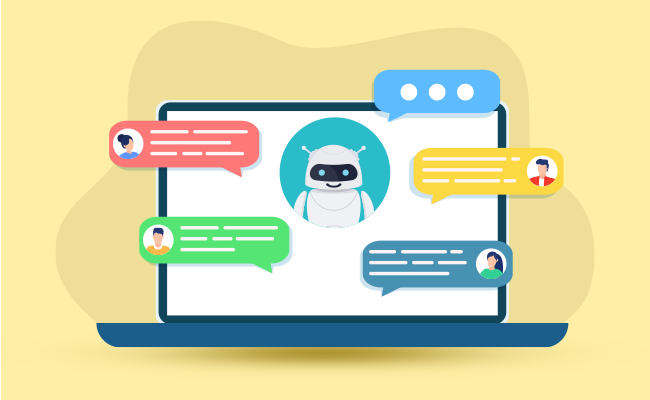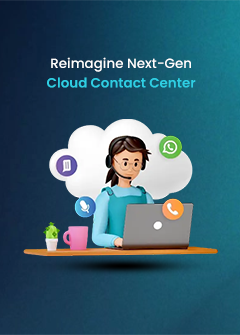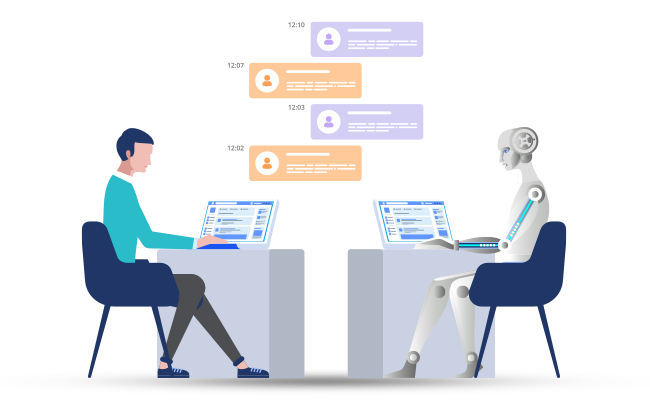Staying abreast of technology is no longer enough for businesses to simply stay relevant; integrating technology seamlessly into everyday operations to create new opportunities and untapped potential is essential. Customer Engagement with ChatGPT takes this concept to the next level
In the current competitive landscape, businesses that successfully leverage technology will claim the top place in respective industries. It is not just a tool but a catalyst that propels businesses towards success and transformation.
The recent technological sensation, ChatGPT, is revolutionizing the way businesses interact with their customers.
With its conversational abilities and personalized support, ChatGPT is playing a crucial role in enhancing customer engagement and driving business success.
In this article, we will explore the impact of technology in business, with a particular focus on how success leaders can employ effective strategies to drive customer engagement with ChatGPT.
How to Strategize Customer Engagement with ChatGPT?

Successful leaders in business can effectively use ChatGPT to develop customer engagement by following these strategies
Understand your Audience
Before utilizing customer engagement with ChatGPT , it’s crucial to have a deep understanding of your target audience.
Analyze their preferences, pain points, and communication styles. This will help you tailor your interactions with ChatGPT to meet their needs effectively.
Define Clear Objectives
Clearly define your objectives for using ChatGPT in customer engagement. Are you aiming to provide instant support, gather feedback, or offer personalized recommendations?
Having a clear purpose will guide your approach and ensure that you utilize ChatGPT effectively.
Train ChatGPT with Relevant Data
To make ChatGPT more effective, train it with relevant data that aligns with your business domain and customer needs.
By incorporating industry-specific knowledge and customer insights, you can enhance ChatGPT’s responses and make them more relevant and valuable.
Provide Accurate and Consistent Information
Ensure that the information provided by ChatGPT is accurate and up to date. Regularly review and update the training data to avoid outdated or incorrect responses. Inaccurate information can lead to customer dissatisfaction and undermine their trust in your business.
Set Expectations and Manage Limitations
Communicate transparently with customers about ChatGPT’s capabilities and limitations. Let them know that they are interacting with an AI system and that certain queries may require human assistance.
Managing expectations will prevent customers from becoming frustrated or confused if ChatGPT is unable to fulfill their requests.
Monitor and Optimize Performance
Continuously monitor ChatGPT’s performance and collect feedback from customers. Analyze the interactions to identify areas where ChatGPT can be improved or where human intervention may be necessary.
Regularly update and refine ChatGPT’s training data based on the feedback received to enhance its effectiveness.
Offer Personalized Experiences
Leverage customer data and insights to provide personalized experiences through ChatGPT. Tailor responses to individual preferences, past interactions, and purchase history.
By offering personalized recommendations or addressing specific customer needs, you can strengthen engagement and build customer loyalty.
Maintain a Human Touch
While ChatGPT can provide valuable support, it’s important to maintain a human touch in customer interactions.
Encourage ChatGPT to use empathy, provide friendly and polite responses, and know when to escalate the conversation to a human representative if necessary.
Iterate and Adapt
As customer needs and preferences evolve, continuously iterate and adapt your use of ChatGPT.
Stay updated with the latest advancements in natural language processing and AI technologies. Regularly evaluate customer feedback, analyze metrics, and make necessary adjustments to optimize customer engagement with ChatGPT.
Best Use Cases

ChatGPT has several popular use cases for business leaders
- Customer Support and Service: Utilize ChatGPT to handle customer inquiries, troubleshoot issues, and provide product information.
- Sales and Lead Generation: Engage potential customers, provide personalized recommendations, and assist in lead conversion.
- Personalized Recommendations: Leverage ChatGPT’s ability to understand preferences and deliver personalized product or content recommendations.
- Interactive Marketing and Campaigns: Integrate ChatGPT into marketing campaigns for interactive experiences, customer feedback, and targeted messaging.
- Virtual Assistant and Self-Service: Use ChatGPT as a virtual assistant, handling tasks such as appointment scheduling, order tracking, and account inquiries.
- Market Research and Insights: Gather customer feedback, conduct surveys, and gain actionable insights using ChatGPT.
- Training and Onboarding: Support employee training and onboarding processes through ChatGPT’s interactive guidance.
- Content Creation and Curation: Utilize ChatGPT to generate content, suggest ideas, and assist in content curation.
10 Effective Strategies for Success Leaders – ChatGPT Prompts
1. Prompts for Personalization Strategy:
- “What are some effective personalization strategies for engaging customers and enhancing their experience with our [insert your products/services]?”
- “How can we use customer data to create personalized interactions and tailored offers that resonate with individual customers for [insert your products/services]?”
- “What role does AI and machine learning play in customer engagement personalization, and how can we leverage these technologies effectively?”
- “How can we personalize our communication channels to match the preferences of different customer segments?”
- “Are there any best practices for using personalized content and recommendations to increase customer engagement and retention in [insert your industry]?”
Explanation: Personalization is of paramount importance in customer engagement. By asking customers about their preferences, businesses can demonstrate that they care about their individual needs.
Use the information gathered to provide personalized product recommendations, content, or offers, creating a more relevant and satisfying experience for each customer.
You can further enrich this process by utilizing modern DXP architecture. With DXP, organizations can create multiple touchpoints across the customer journey, seamlessly utilizing customer data.
2. Prompts For Content Strategy
- “How can we incorporate personalization strategies into our content to engage customers and enhance their experience with our [insert your products/services]?”
- “In what ways can we leverage AI and machine learning in our content strategy to enhance customer engagement through personalized recommendations and experiences?”
- “How can we use personalized content and recommendations to increase customer engagement and retention in [insert your industry]? Are there any industry-specific best practices we should consider?”
- “How can we create a content journey that guides customers through personalized interactions at various touchpoints, from awareness to post-purchase engagement?”
- “How can we use personalization to anticipate customer needs and pain points, providing them with proactive solutions through our content?”
Explanation: This prompt creates a sense of exclusivity and makes customers feel valued. By inviting them to an exclusive product launch event, you offer a sneak peek into new offerings, giving them a sense of being part of a select group with early access to exciting updates.
3. Prompts For Social Media Engagement Strategy
- “How can we create compelling and shareable content that resonates with our target audience on social media?”
- “How will we leverage social media listening to understand our audience’s preferences, concerns, and interests, and use this insight to tailor our engagement strategy?”
- “In what ways can we use storytelling and authentic content to connect emotionally with our social media audience and strengthen brand loyalty?”
- “What methods will we use to proactively address customer feedback on social media and turn it into opportunities for engagement and improvement?”
- “What collaborative initiatives or partnerships can we pursue on social media to tap into new audiences and enhance engagement through cross-promotion?”
- “What customer-centric initiatives can we launch on social media, such as customer spotlights, testimonials, or appreciation campaigns, to make our audience feel valued and engaged?”
Explanation: Social Media is the new megaphone of the digital age. Leveraging the benefits of soil media can unlock new strategies in customer development.
By using this prompt you can encourage customers to engage with your brand on social media platforms. By staying connected, customers can receive real-time updates, exclusive offers, and create a sense of community and make them feel like part of an exclusive group.
4. Prompts For Interactive Content Strategy
- “What types of interactive content formats (e.g., quizzes, polls, calculators, interactive, infographics) are most relevant and appealing to our target audience?”
- “How will we use interactive content to encourage two-way communication and foster meaningful interactions with our audience?”
- “What interactive storytelling techniques can we employ to immerse our audience and create a memorable brand experience?”
- “How can we continuously optimize and iterate our interactive content based on user feedback and performance data?”
- “What steps can we take to ensure that our interactive content is accessible and user-friendly across different devices and platforms?”
- “What calls-to-action (CTAs) and follow-up strategies will we implement to nurture leads generated through interactive content?”
Explanation: Interactive content, such as quizzes and challenges, encourages active participation and engagement. By inviting customers to participate in a weekly trivia challenge related to your industry or products, you make the experience enjoyable and interactive, fostering a sense of fun and excitement around your brand.
5. Prompts For User-Generated Content Strategy
- “How can we encourage our customers and audience to create and share user-generated content (UGC) related to our brand, products, or services?”
- “What types of UGC are most effective for showcasing our products or services and building social proof? (e.g., customer testimonials, product reviews, unboxing videos)”
- “What legal considerations and permissions do we need to address when using UGC in our marketing efforts?”
- “What strategies can we use to repurpose UGC across different marketing channels, such as email campaigns or print materials?”
- “How will we monitor and moderate UGC to ensure it aligns with our brand values and guidelines?”
Explanation: Acknowledgement and appreciation makes all the difference! User-generated content (UGC) is a powerful way to engage customers and showcase real experiences with your brand.
By encouraging customers to share photos of themselves using your products and offering to feature them on your platforms, you demonstrate appreciation for their creativity and build a sense of community around your brand.
6. Prompts For Customer Feedback and Surveys
- “What specific areas of our products or services should we seek feedback on to better understand our customers’ needs and preferences?”
- “What should be the frequency and timing of customer surveys to gather valuable insights without overwhelming our customers?”
- “What types of questions should we include in our surveys to capture both quantitative data (e.g., ratings, scales) and qualitative insights (e.g., open-ended responses)?”
- “How will we analyze and interpret the feedback received to extract actionable insights and make informed business decisions?”
- “How can we use customer feedback as a basis for continuous improvement and innovation in our products, services, and overall customer experience?”
- “What metrics and key performance indicators (KPIs) will we track to measure the success and impact of our customer feedback initiatives?”
Explanation: Feedbacks act as multi-purpose tools. It drives customer engagement with ChatGPT and instigates new inventions from suggestions. For any kind of business, Customer feedback is vital for continuous improvement.
Use the feedback to make data-driven decisions and enhance your products or services based on customer input.
7. Prompts For Email Marketing Campaigns
- “What specific goals do we want to achieve with our email marketing campaigns? (e.g., lead generation, sales conversion, brand awareness)”
- “What clear and compelling CTAs will we use to drive desired actions from our recipients?”
- “How can we set up automated email sequences tailored to different segments of our audience, based on their behaviors and interests?”
- “What data points (e.g., name, past purchases) can we leverage to personalize our emails and enhance customer experience?”
- “How will we ensure that our email templates are mobile-responsive to cater to users accessing emails on various devices?”
- “What A/B testing strategies will we employ to continually optimize subject lines, content, and CTAs for better performance?”
- “What measures will we take to improve email deliverability and avoid spam filters?”
Explanation: Email marketing campaigns keep customers informed about your latest updates, promotions, and industry insights.
By inviting them to subscribe to your newsletter, you build a direct line of communication and provide valuable content that keeps them engaged with your brand.
8. Prompts For Data-Driven Personalization
- “How can we use customer behavior data (e.g., browsing history, purchase patterns) to create personalized product or content recommendations?”
- “How can we use demographic data and location-based information to personalize our marketing messages and offers?”
- “What privacy and security measures will we implement to ensure the responsible handling of customer data?”
- “What strategies can we employ to create personalized landing pages or website experiences for different customer segments?”
- “How will we measure the effectiveness of our data-driven personalization efforts, and what key performance indicators (KPIs) will we track?”
- “What ethical considerations should we take into account when using customer data for personalization, and how can we maintain transparency with our customers?”
Explanation: Data is the new currency and an opportunity to become great. Utilizing customer data to offer personalized recommendations and promotions enhances customer experience.
Understanding customer preferences and catering to their specific needs can build trust and loyalty, leading to increased engagement and repeat business.
9. Prompts For Customer Support Excellence
- “What are the key customer support channels we will offer to ensure accessibility and responsiveness to our customers? (e.g., phone, email, live chat, social media)”
- “How will we train and empower our customer support team to provide knowledgeable and empathetic assistance to customers?”
- “What strategies can we employ to reduce response times and ensure prompt resolutions to customer inquiries and issues?”
- “What resources and knowledge base will we provide to customers for self-service support, empowering them to find solutions independently?”
- “What training and development programs will we implement to enhance the skills and expertise of our customer support team?”
- “How can we foster a customer-centric culture within our organization, where every team member is committed to delivering excellence in customer support?”
Explanation: The path to successful business begins with the understanding of customer service and support. By providing round-the-clock assistance, you show customers that their needs are always a priority, also, it emphasizes the determination of business to provide excellent customer support.
Encouraging customers to reach out for any queries or assistance fosters trust and confidence in your brand.
10. Prompts For Virtual Events and Webinars
- “What are the objectives and goals of our virtual event or webinar? (e.g., lead generation, brand awareness, thought leadership)”
- “What opportunities for audience interaction and engagement will we incorporate into our virtual event or webinar? (e.g., live Q&A, polls, chat rooms)”
- “How will we follow up with attendees after the event to nurture leads and maintain engagement?”
- “What metrics and key performance indicators (KPIs) will we track to evaluate the success and impact of our virtual event or webinar?”
- “How can we leverage social media and other online channels to extend the reach and visibility of our virtual event or webinar?”
- “What measures will we take to ensure the security and privacy of attendees’ information during the virtual event?”
- “How will we gather feedback from attendees to identify areas for improvement and to inform future virtual events or webinars?”
Explanation: Virtual events and webinars offer educational and engaging experiences for customers. Having a customized invitation sent to reserve a spot for an upcoming webinar, entices customers with valuable insights and opportunities to learn from industry experts, increasing their engagement with your brand.
Afterword

Resistance towards technological advancements and new age trends can lead to obsoletion. Hopping onto the trends and integrating the advancements to derive laudable outcomes will help you soar.
AI tools like ChatGPT play a significant role in modern businesses. They enhance customer engagement, streamline operations, support decision-making, foster innovation, and facilitate data analysis.
Much like the saying “If you can’t beat em, join them,” it is imperative for business and success leaders to embrace ChatGPT because in today’s world, what you achieve is more important than how you achieve.
Integrating technology into business is of paramount importance in the modern era.
Technology enhances operational efficiency, streamlines processes, and unlocks new opportunities for growth and innovation. If you are operating a successful business and aiming to expand then Cloud Contact Centers solutions might help you soar towards your destination.
Enhanced customer experience through cloud contact center.
Unlocks new Opportunities for Growth

Trusted by over 10000+ partners, MyOperator’s Cloud Contact Center service can easily be integrated into your preferred CRM with 99.9% uptime results and with advanced IVR features, Our cloud call center ensures uninterrupted and efficient communication. Check out the MyOperator’s SaaS service and sign up for a free trial.
In this article, you will understand the perks and possibilities of ChatGPT from a successful leader’s perspective. Inculcate Growth, Productivity, Transformation into your business with ChatGPT.


